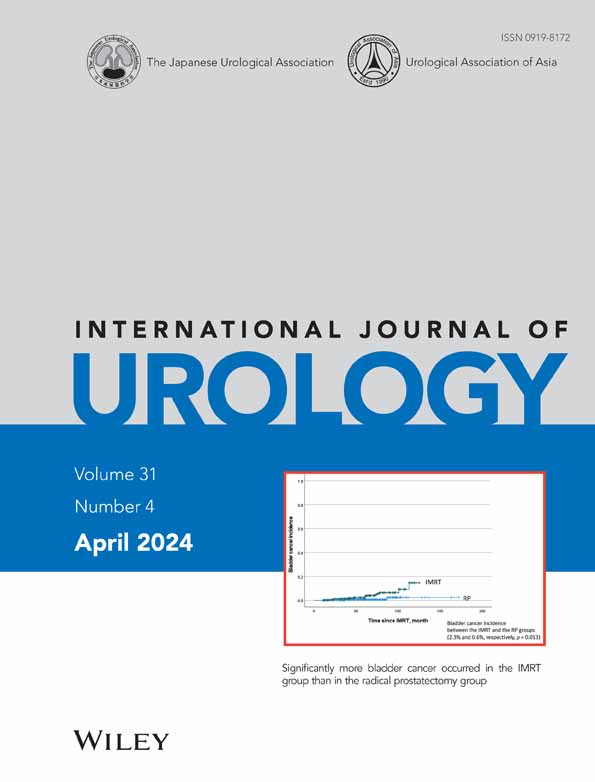Analysis of early clinical signs and risk factors for severe hemorrhagic cystitis after stem cell transplantation in children
Abstract
Introduction
To analyze the characteristics of early clinical symptoms of hemorrhagic cystitis (HC) after hematopoietic stem cell transplantation (HSCT) and the risk factors of severe HC.
Methods
We retrospectively analyzed 77 children with post-HSCT HC treated at our hospital between June 2013 and June 2021. Clinical characteristics were collected and catalogued.
Results
Among the children with urinary tract irritation symptoms (UTIS) as the first symptom, symptoms appeared earlier than hematuria symptoms (28 day vs. 31 day, p = 0.027), and the time progressing to severe HC was significantly longer in these children (12 day vs. 7 day, p = 0.038), but there was no significant difference in the number of participants (57.8% vs. 59.4%, p = 0.889). BK polyomavirus (BKV) infection was an independent risk factor (hazard ratio [HR] = 2.782, p = 0.035) for severe HC, which was also positively associated with multi-viral infection (HR = 2.215, p = 0.020).
Conclusions
In HC children, when the first urinary tract symptom was UTIS, it appeared earlier than hematuria, and the time of progression to severe HC was significantly longer, suggesting that we still need more aggressive treatment for these children to prevent the worsening of symptoms. The severity of HC was positively correlated with BKV infection and multiple infections.
CONFLICT OF INTEREST STATEMENT
The authors declare that the research was conducted in the absence of any commercial or financial relationships that could be construed as a potential conflict of interest.
Open Research
DATA AVAILABILITY STATEMENT
Data supporting Tables 1–4 are not publicly available to protect patient privacy.




